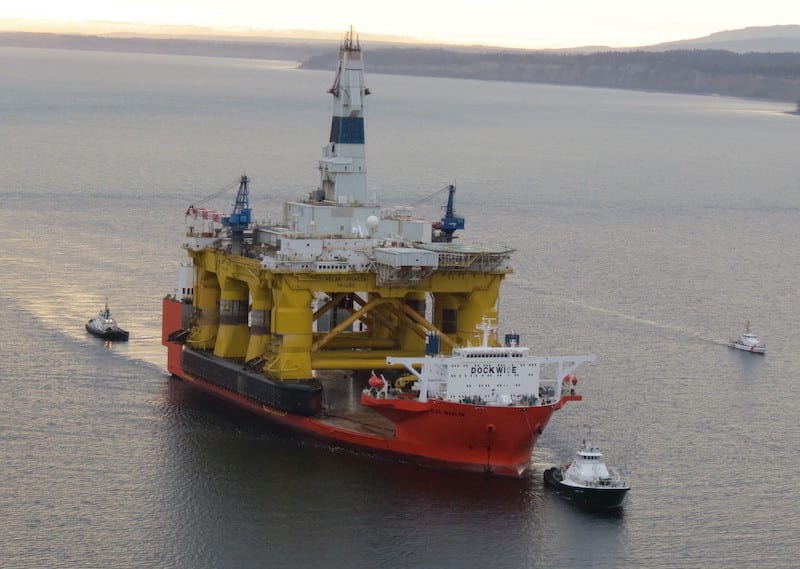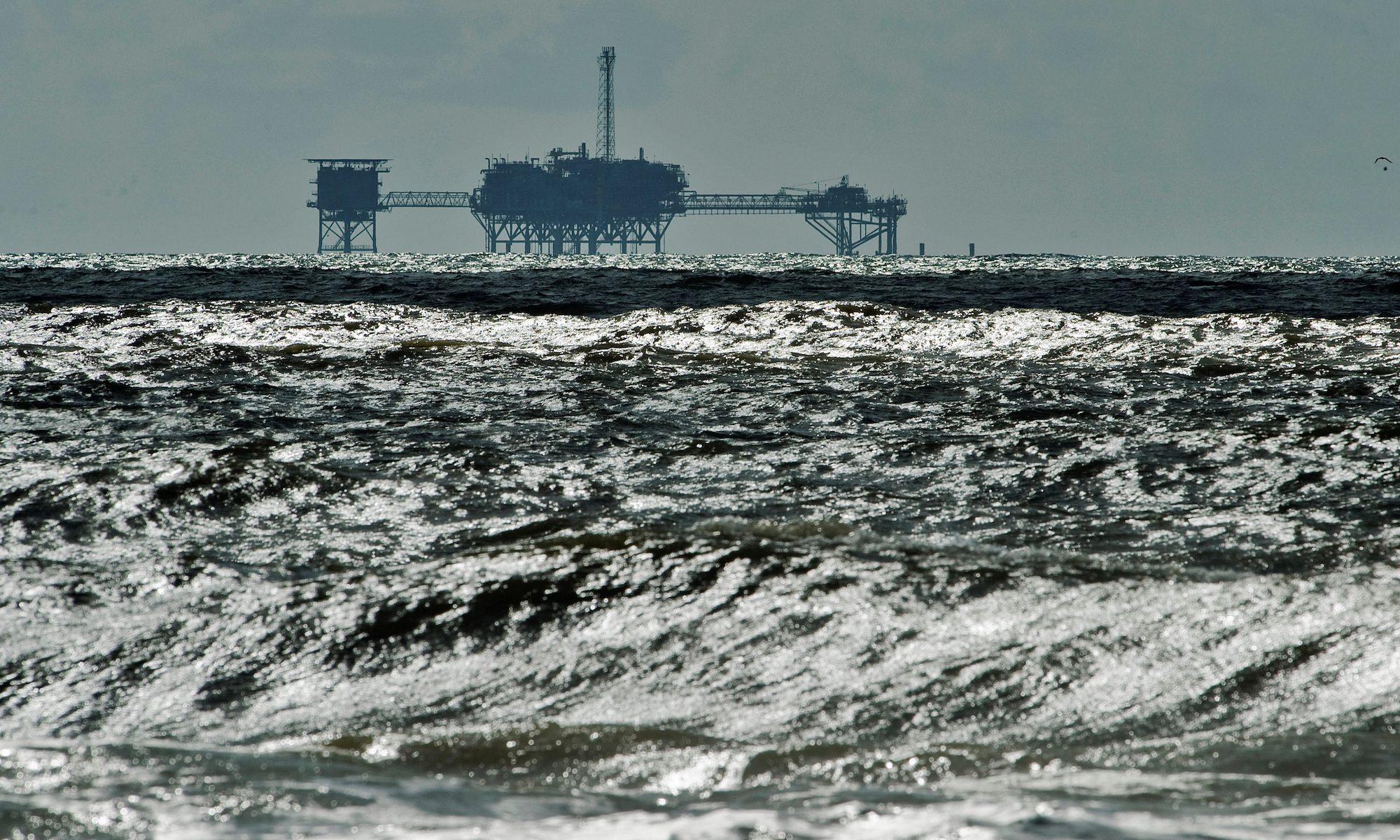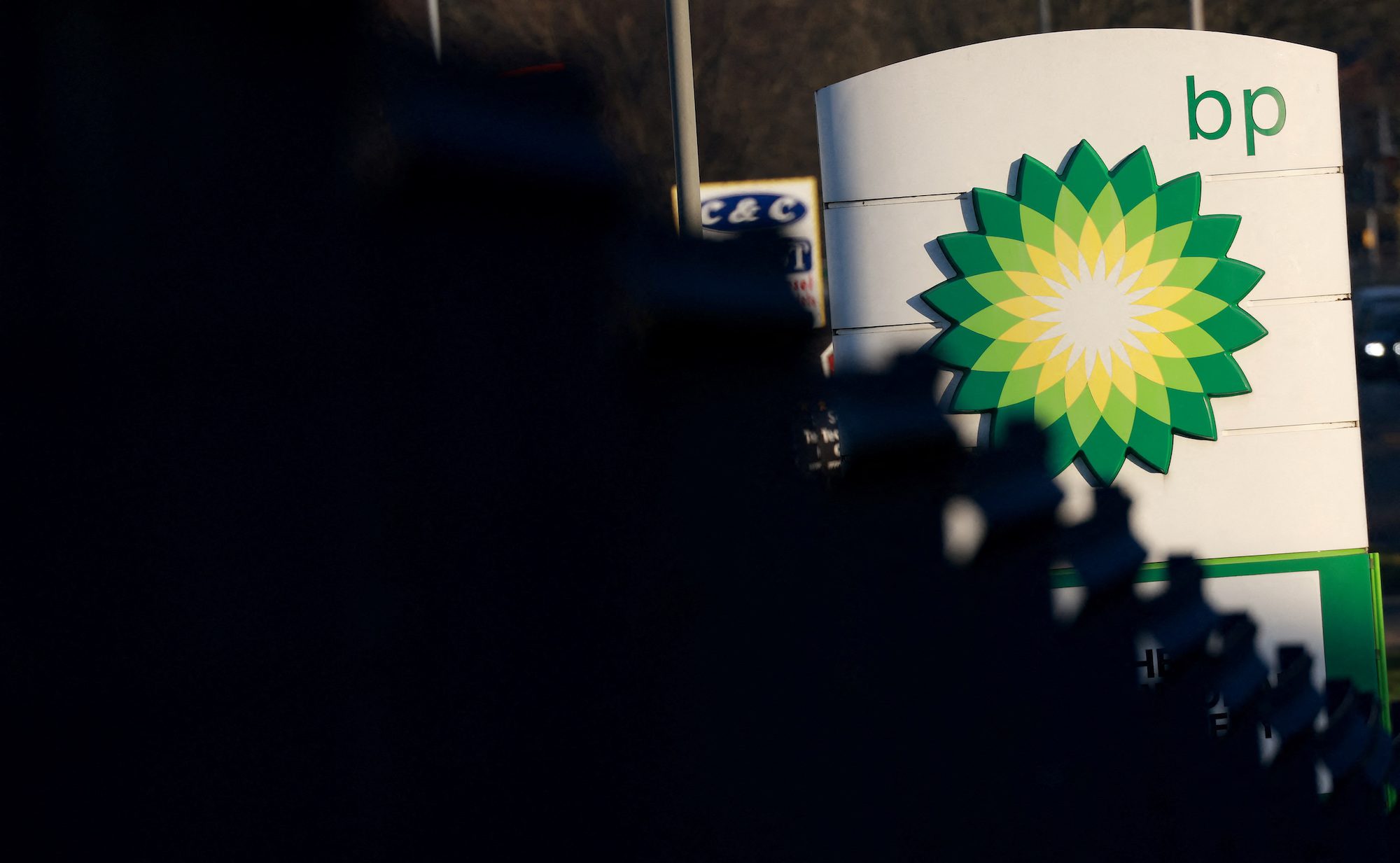The heavy lift ship Blue Marlin arrives in Washington carrying Shell’s Polar Pioneer rig, April 17, 2015. Photo: U.S. Coast Guard
By Eric Roston
(Bloomberg Business) — In December 1979, in the wake of the Iranian revolution and the oil price shock, executives from the biggest energy companies converged on Fairbanks for an auction of leases to drill in Alaska’s Beaufort Sea. Oil was nearing a then-record $29 a barrel. “This is the hottest area in North America,” one of the executives told the New York Times.
Oil companies would go on to produce more than 10 billion barrels of oil from the North American Arctic. And counting.
This week, with oil at $65, the Interior Department approved Royal Dutch Shell’s plan to to drill up to six exploratory wells in the Chukchi Sea, just west of the Beaufort.
The industry’s secret? Patience. And a strong stomach.
The world is awash in oil. The Arctic is prone to weather that can affect navigation, even in the summer drilling season. Shell has already stumbled there; a botched 2012 effort, when a drilling rig ran aground, spurred investigations by the Coast Guard and Interior, which turned up major environmental and safety concerns. On Thursday, environmentalists in kayaks faced off against a Shell rig in Seattle’s harbor, just a taste of the activism and PR challenge to come. Opponents warn that a spill in the ecologically sensitive region—often frozen yet unpredictable with climate change and far from help—is as unimaginable as the Deepwater Horizon was in the Gulf of Mexico in 2010.
Why do it?
The answer goes back to 1979. The development of enormous oil resources requires enormous amounts of money, time, and risk. There could be roughly 11 billion barrels of undiscovered economically recoverable oil in the entire Chukchi. Or maybe the answer goes back to the dawn of the industry: What oil companies do is look for oil.
Even in an optimal scenario for Shell—lots of oil and no mistakes—the company is years away from production. First they’ll look for the oil. Then, if they find it, they’ll evaluate it to determine whether it’s worth producing. If it’s worth producing, they may want to cash out a bit. Shell owns 100 percent of its leases now. It might sell tracts to pay off its investment and to have partners in the hard work. By that time, who knows what oil will fetch.
“The current oil price is actually somewhat irrelevant. The size of the resource is what’s important,” Marvin Odum, president of Shell Oil Company, told CNBC on Thursday.
The big oil companies have been thinking about the Arctic for a long time. Alaskan oil production began in the 1960s. In 1989, Shell found hydrocarbons from exploratory wells in the Chukchi Sea, the leases for which it had acquired a year earlier. After oil prices crashed, the recovery was slow, and Shell ended up returning those early leases to the U.S.
If it finds riches and pursues them, the oil might find its way to market through a subsea pipeline. That’s if Shell finds the reserves it expects in the Chukchi. And if, by the time it’s ready to pump them up, they’re fetching more than, what, $90 a barrel? No one can say what will make the endeavor profitable so far in the future.
Spending money is the easy part. The hard part is what Shell is doing right now: moving ahead with its latest Arctic- drilling plan, seven years and $6 billion in the making, and not knowing how it will turn out.
©2015 Bloomberg News
Unlock Exclusive Insights Today!
Join the gCaptain Club for curated content, insider opinions, and vibrant community discussions.

 Join The Club
Join The Club













